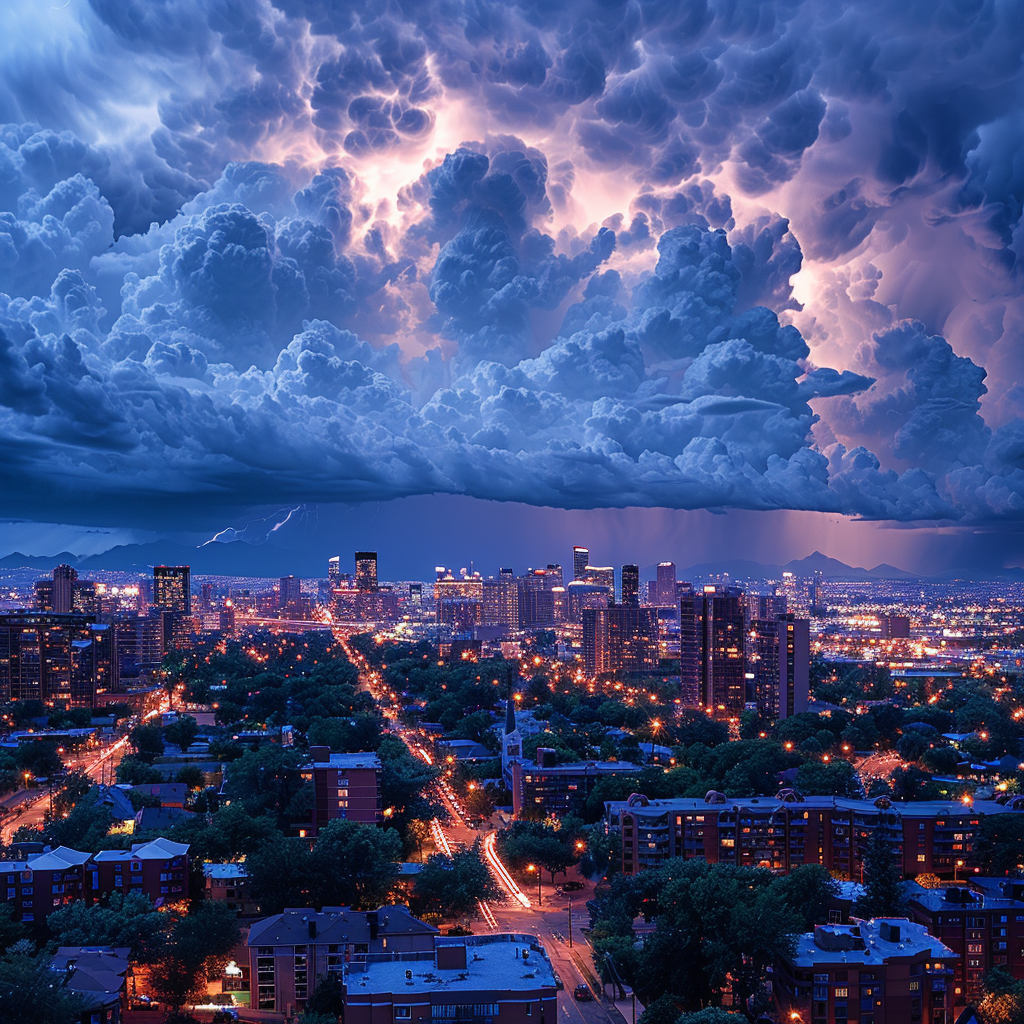May 8, 2017 Insane Denver Hailstorm

On May 8, 2017, a severe hailstorm struck the Denver metropolitan area, causing widespread damage and disrupting daily life for thousands of residents. The storm, which lasted for several hours, produced hailstones ranging in size from small pellets to golf ball-sized chunks of ice, leaving a trail of destruction in its wake. This article will provide a comprehensive overview of the event, including the storm’s timeline, the meteorological conditions that led to its formation, and the extent of the damage it caused.
The hailstorm began to develop in the early afternoon hours of May 8, as a potent upper-level disturbance moved across the Rocky Mountains and into the Denver area. This disturbance, combined with strong daytime heating and abundant low-level moisture, created an unstable atmosphere that was primed for severe thunderstorm development. By 2:30 PM MDT, the first severe thunderstorm warnings were issued for the Denver metro area, as radar indicated the presence of large hail and strong winds within the developing storms.
As the afternoon progressed, the thunderstorms continued to intensify and expand in coverage. By 3:00 PM MDT, large hail was being reported across much of the Denver area, with some locations experiencing hailstones up to 2.5 inches in diameter. The largest hail was reported in the western and southern suburbs of Denver, including Lakewood, Littleton, and Highlands Ranch. In these areas, the hail was large enough to cause significant damage to vehicles, roofs, and landscaping.
The hailstorm reached its peak intensity between 3:30 PM and 4:30 PM MDT, as multiple severe thunderstorms merged into a large, slow-moving complex over the Denver metro area. During this time, the National Weather Service issued a rare “Flash Flood Emergency” for the city of Denver and its surrounding suburbs, as the combination of heavy rain and melting hail created dangerous flooding conditions on many roads and highways. The flooding was particularly severe in the southern and eastern portions of the metro area, where some locations received up to 3 inches of rain in less than an hour.
As the storm system slowly moved off to the east, the hail and heavy rain began to subside, but not before leaving a significant amount of damage in its wake. According to insurance industry estimates, the May 8 hailstorm caused more than $2.3 billion in damage, making it the costliest hailstorm in Colorado history. The majority of the damage was to vehicles, with more than 150,000 auto insurance claims filed in the wake of the storm. Many homes and businesses also suffered damage to roofs, siding, and windows, with some buildings experiencing complete roof failures due to the weight of the accumulated hail.

In the days following the storm, cleanup and repair efforts began in earnest across the Denver area. Insurance companies set up mobile claims centers to process the large volume of auto and property damage claims, while roofing and construction companies worked around the clock to repair damaged buildings. The City of Denver also launched a major cleanup effort to remove debris from streets and public spaces, with crews working 12-hour shifts to clear the affected areas.
From a meteorological perspective, the May 8 hailstorm was a classic example of a severe thunderstorm event in the High Plains region of the United States. The combination of strong upper-level winds, abundant low-level moisture, and intense daytime heating created an environment that was highly conducive to the development of large hail and damaging winds. The slow-moving nature of the storm system also allowed for a prolonged period of hail accumulation, which contributed to the extensive damage that occurred.
One of the unique aspects of the May 8 storm was the size and density of the hailstones that fell. According to the National Weather Service, the largest hailstone reported during the storm had a diameter of 2.75 inches, which is roughly the size of a baseball. However, many of the hailstones that fell were much smaller in size but incredibly dense, with some reports describing the hail as feeling like “small rocks” when they hit the ground. This high density of the hailstones likely contributed to the extensive damage that occurred to vehicles and roofs, as the impact of the hail was more severe than what would typically be expected from hailstones of a similar size.
